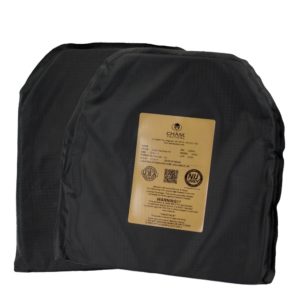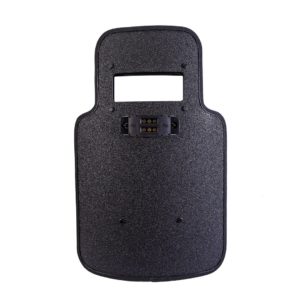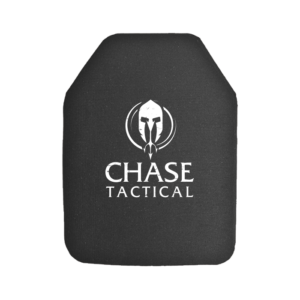Differences Between NIJ Levels of Protection

Body armor is perhaps the most significant lifesaving element in tactical equipment and personal defense. Whether for law enforcement, the military, private security forces, or a civilian interested in self-defense, selecting appropriate body armor can be a matter of life or death.
The National Institute of Justice (NIJ) is the primary governing agency responsible for establishing ballistic resistance standards within the United States. NIJ’s rating system ensures that armor is tested against known ballistic threats to verify its effectiveness against these threats. Knowing these levels, from protection for everyday handgun rounds to armor-piercing rifle rounds, is essential to making an informed decision about your protection equipment.
What Is the NIJ and Why Does It Matter?
The NIJ is a U.S. Department of Justice division responsible for setting scientific and technical standards for law enforcement equipment, including body armor. Their standards—such as NIJ 0101.06 and the newer 0101.07—are globally respected and followed.
The NIJ tests body armor against various ammunition types and velocities to determine the level of protection it provides. The most recent standard categorizes armor into two classifications: handgun (HG) and rifle (RF). These ratings help users understand what threats a particular vest or plate can stop.
The 5 Main NIJ Protection Levels
Each NIJ level corresponds to different ballistic threats. Let’s walk through each level to see what it protects against and who it’s designed for
Level HG1: Basic Handgun Protection

Level HG1 (previously called Level II) is considered the entry-level standard for soft body armor. It’s designed to stop lower-velocity handgun rounds, such as the 9mm Luger and .357 Magnum. This level is generally used in lower-risk environments, often by private security or law enforcement officers on standard duty in areas with less frequent violent encounters.
Armor in this category is typically lightweight, allowing for high mobility and making it suitable for everyday wear over extended periods of time. However, its protective capabilities are limited strictly to handguns. It does not protect against high-velocity rounds or rifle fire.
Level HG2: Enhanced Handgun Protection
Building on HG1, Level HG2 offers improved protection against higher-velocity handgun threats, including the .44 Magnum. While still considered soft armor, it’s tested against rounds traveling at faster speeds, making it suitable for officers working in urban environments where more powerful handguns are a concern.
This level strikes a good balance between comfort and enhanced ballistic resistance. For many police departments, Level HG2 is a standard issue as it offers broader handgun protection without compromising wearability.
Level IIIA: High-End Handgun Defense

Level IIIA represents the top tier of soft body armor. It’s designed to stop virtually all handgun threats, including powerful rounds like the .357 SIG and .44 Magnum at higher velocities. It often includes more layers of material, which can increase bulk slightly, but the added protection is worth the trade-off in higher-risk environments.
Security professionals in executive protection roles and undercover officers often rely on Level IIIA because it remains relatively concealable while offering the highest degree of protection against handgun ammunition. However, like other soft armor levels, it still cannot stop rifle rounds.
Level III: Entry-Level Rifle Protection
Moving into hard body armor, Level III is the first to offer true rifle protection. This level is tested against 7.62mm NATO full-metal-jacket rounds—equivalent to the .308 Winchester—at velocities of nearly 2,800 feet per second.
Level III plates are typically made from hard materials, such as ceramic, steel, or polyethylene. They are commonly used by military personnel, SWAT teams, and security forces operating in hostile environments. They offer strong protection against common rifle threats but may not be effective against more specialized or armor-piercing ammunition.
Level IV: Maximum Ballistic Protection

Level IV is the best-of-the-best ballistic armor. It is specially tested to repel.30-06 armor-piercing bullets, some of the most penetrative bullets available on the battlefield.
This protection is reserved for the most hostile environments, including military combat operations or hostage rescue situations. Because of the materials and thickness involved, Level IV plates are heavier and less pliable than other armor types. Unless the threat level warrants it, they are not usually worn for daily use over an extended period.
Comparing NIJ Levels in Real-World Terms
| Level | Armor Type | Stops Handguns? | Stop Rifles? | Specialized Use |
| HG1 | Soft Armor | Yes | No | Entry-level security, private use |
| HG2 | Soft Armor | Yes | No | Patrol officers, law enforcement |
| IIIA | Soft Armor | Yes | No | High-threat patrols, concealed carry |
| III | Hard Armor | Yes | Yes | Tactical units, military |
| IV | Hard Armor | Yes | Yes (AP rounds) | War zones, extreme-risk missions |
That’s why it’s essential to consider your mobility requirements, risk factors, and operational needs when selecting the best armor.
An officer may prefer lightweight, concealable armor, such as Level IIIA, whereas a tactical team deploying into a known hostile area would opt for Level IV plates. III or III+ plates are the civilian users’ favorite choice for home defense or emergency preparedness, depending on their own perceived threat.
How the New NIJ 0101.07 Standard Impacts These Levels
Implementing the NIJ 0101.07 standard gives more clarity and specificity in testing. The new categories divide armor into handgun (HG1 and HG2) and rifle protection (RF1 and RF2), each tested with new ammunition types to better represent actual threats.
One major advancement is the addition of environmental testing, which subjects armor to heat, water, and mechanical stress before ballistic testing. This assures the armor will perform as required under different and extreme conditions.
Companies are in the process of moving their products to these new standards. Although older certifications, such as 0101.06, are still in effect, it’s prudent to seek out the latest certifications where feasible.
How to Choose the Right NIJ Level for Your Needs
The appropriate NIJ level depends on your environment, role, and the results of your risk assessment. Here are three core factors to consider:
1. Threat Environment
- Are you more likely to face handguns or rifles?
- Is the threat from armor-piercing ammunition a concern?
2. Mobility vs. Protection
- Soft armor (Levels HG1–IIIA) is lighter and easier to conceal.
- Hard armor (Levels III–IV) offers more protection but is heavier and less flexible.
3. Budget and Durability
- High-level armor is typically more expensive.
- Consider longevity, especially when purchasing ceramic plates, as they may degrade over time and with repeated use.
Conclusion
The NIJ levels of protection provide an essential guide to choosing armor that meets your operational needs and possible threats. From minimal handgun protection to full rifle and armor-piercing defense, the NIJ standard means a proven solution covers every situation.
Instead of thinking that higher is always better, aim for the level that best suits your environment, mobility requirements, and day-to-day reality. This will not only safeguard you but also increase your productivity in the field.
Frequently Asked Questions
Can Level IIIA body armor stop rifle rounds?
No. Level IIIA is designed only for handgun threats. To stop rifle rounds, you need at least Level III plates.
Is it legal for civilians to own Level IV armor in the U.S.?
Yes, in most states. However, some states have restrictions, and convicted felons are typically prohibited from owning body armor.

